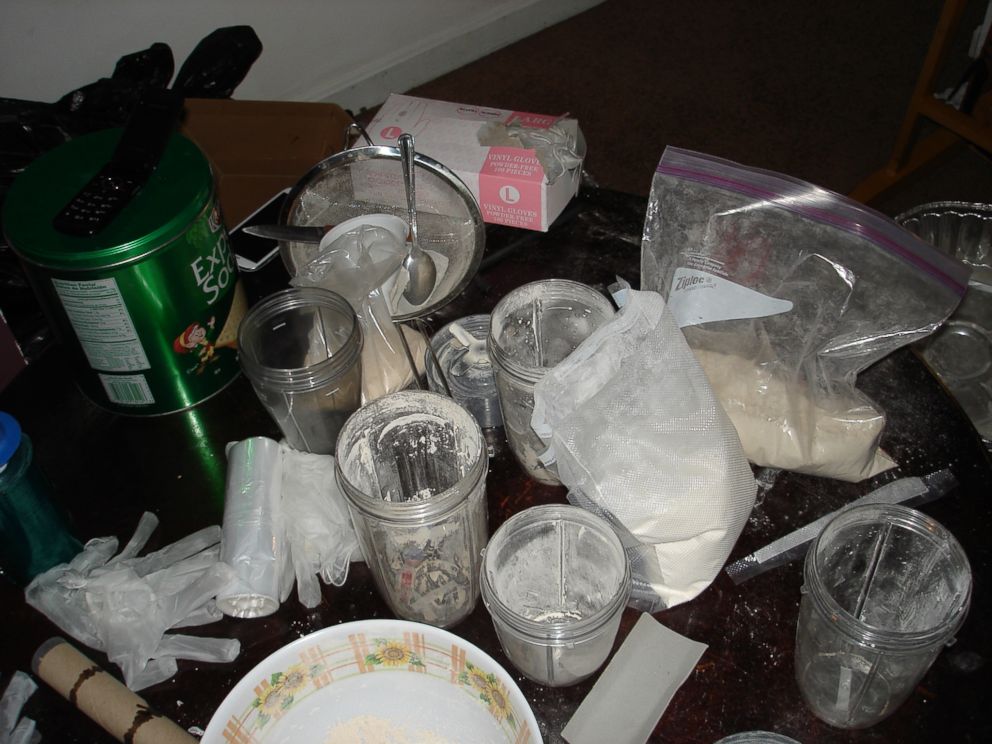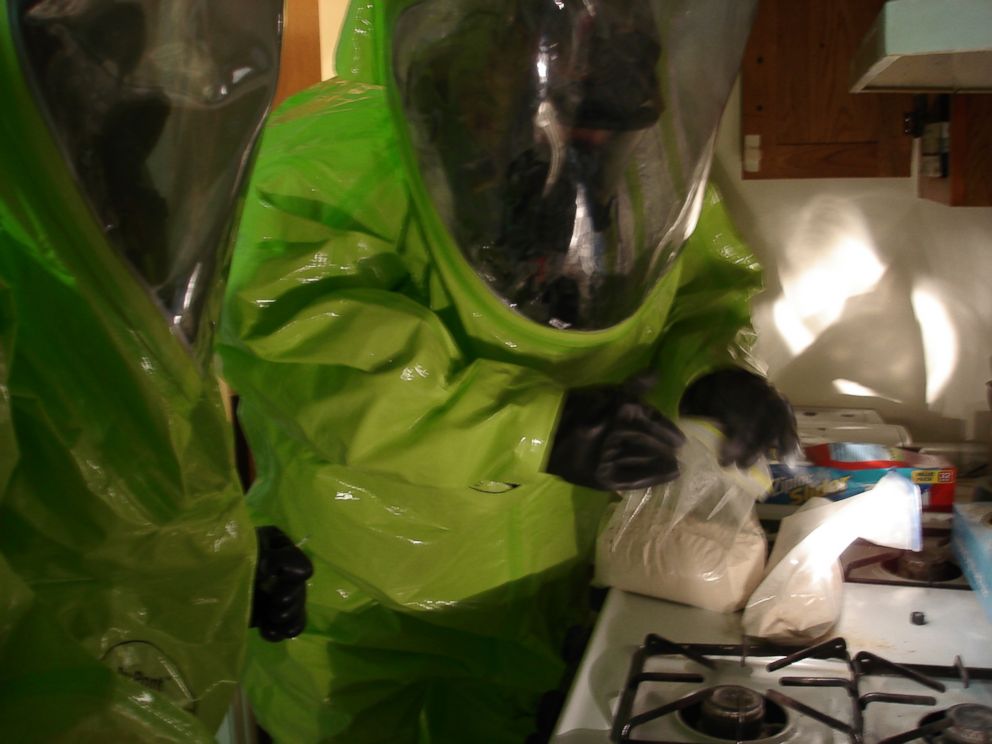Fentanyl Deaths Have Spiked Across the US, With No Sign of Slowing Down
It's like a "weapon of mass destruction," says the DEA.
— -- Morgan Gilman, 21, of Manchester, New Hampshire got in her car and drove three hours to buy a supply of fentanyl.
When she arrived, she took the "normal amount" and got back in her car to drive home, but not before an ominous warning from the seller: "Be careful, it's stronger this time."
The next thing she remembers is waking up in the hospital, handcuffed to the bed with the worst headache of her life.
"I was doing about 80 on the highway when I o.d.'ed behind the wheel," Gilman said.
The car rolled four times, she was told. She wasn’t wearing a seat belt, but somehow managed to stay inside the vehicle.
She was in a coma, but awoke a few hours later with a broken back.
"My dad was crying. I had no idea why I was there," Gilman said. "My first thought was like 'What is going on?'" she said.
After the harrowing experience, she said she decided to end her drug use.
"I was tired of living in my car, I was tired of needing it, I was tired that the first thing I thought about when I woke up was how to find drugs," she told ABC News.
Gilman's car accident was this past spring and she said she's now been clean for seven months.
But many people don’t survive. Gilman said her best friend died of a drug overdose. And fentanyl -- the deadly synthetic opioid that is quickly catching up to heroin as one of the most abused drugs -- has been killing people at extraordinary rates.

Morgan lives at ground zero for the fentanyl epidemic. In the small state of New Hampshire, where there are typically less than 20 homicides a year, more than 400 people died from drug overdoses in 2015, according to FBI crime data and New Hampshire officials. Around 70 percent of those were linked to Fentanyl, according to the New Hampshire State Police Forensic Laboratory.
The 2016 overdose deaths are expected to approach 500, according to New Hampshire's lab. Final 2016 numbers aren’t yet available, as officials work through the backlog in drug processing.
Beginning in 2014, the state saw a huge spike in overdoses resulting in death, according to Timothy Pifer, Director of the New Hampshire State Police Forensic Laboratory.
"I've been involved in the forensic field here in New Hampshire for 27 years," Pifer said, "and I lived through the crack epidemics and the methamphetamine, but we've never had deaths associated with it like we do now."
He said he doesn’t believe it’s peaked yet.
The state lab receives about 750 new drug submissions every month, but can only process about 550, according to Pifer.
"Some days it feels like we're shoveling sand against the tide in terms of getting the cases out," he said.
While the Northeast has been hit hard, fentanyl is rapidly spreading across the United States.

The death rate from synthetic opioids, which include fentanyl, increased by about 72 percent between 2014 and 2015, according to a new CDC study. Law enforcement sources believe fentanyl is largely to blame.
For example, in Pennsylvania, there were 349 fentanyl-involved deaths in 2014, and 913 deaths in 2015, according to the DEA. In North Carolina, fentanyl-related deaths, went from 165 in 2014 to 226 last year. And that jumped to 321, according to the preliminary data for 2016 in the state.
In Florida, these deaths were up nearly 70 percent from 2014 to 2015. In Massachusetts they were up 20 percent during the same time period.
On New Year's Eve, police in Methuen, Massachusetts were dispatched to a residence for a report of a baby in distress.
The ten-month-old child was transported to the hospital where she stopped breathing twice and had to be revived by staff, according to the Methuen Police Department.
Hospital tests indicate that the baby had fentanyl in her system, according to police.
"It’s heartbreaking to say the least. I mean it’s a 10-month-old baby," said Lt. Michael Pappalaro.
The baby has since been released into the custody of a family member at a different residence and the incident is still under police investigation.
In an unrelated event two days later, Methuen police arrested a man who was allegedly in possession of $1.2 million dollars worth of fentanyl.
Police chief Joseph Solomon told ABC News that the fentanyl situation in his city is "horrible."
The drug has become a major threat for law enforcement as well.
Fentanyl, which is used legally by medical professionals as a painkiller, is approximately 80 to 100 times stronger than morphine, and 25 to 40 times more potent than heroin, according to the DEA. Contact with just a few grains of the drug can kill.
The Drug Enforcement Administration recently sent a video warning, featuring two investigators from Atlantic County, NJ that accidentally ingested the drug after a seizure, to police around the country warning of its dangers.
"I felt like my body was shutting down," one of the officers said in the video.
DEA agents are forced to wear cumbersome protective suits with oxygen tanks to make arrests and raid buildings.
The suits are so difficult to maneuver in that agents can only wear them for up to 15 minutes at a time, before they need a break.

"If anything can be likened to a weapon of mass destruction in what it does to a community, it's fentanyl," said DEA Deputy Administrator Jack Riley.
Fentanyl is a Schedule II synthetic opioid that is approximately 80 to 100 times stronger than morphine, and 25 to 40 times more potent than heroin.”
Contact with just a few grains of the drug can kill.
Fentanyl is being produced secretly in Mexico and is also being imported directly from China, according to the DEA.
"People on the west coast in Silicon Valley are working on the new iPhone, I think the Sinaloa cartel is working on the next product they're going to market to the addiction base in the United States. That is just how sophisticated they are," he said.
Cartels are marketing it to dealers, who are pushing it on populations with opioid addictions, resulting in deaths.
"That’s how hell-bent they are on making a buck. And I got to tell you, across the country, they don't care who dies," he said.
The drug is cheaper and easier to make then heroin, which requires a growing season.
Some people seek out fentanyl, while others don’t realize what they are selling or buying and using.
Natasha Symonds, 26, overdosed just six days before she spoke with ABC News -- it was her third overdose.
Symonds used heroin for years, but had never heard of fentanyl until the first time she wound up in the hospital.
"It ended up in what I was doing and I didn't even know," she said about the fentanyl.
But that wasn’t the end. She moved out of her house, disconnected from her family and continued to use.
Like Morgan, she also overdosed while driving. The person she was driving with got her help.
"I woke up this time in a different city that I've never really been in," she said.
She was told that despite the dose of Narcan -- a drug used to revive opioid overdose victims -- she almost didn’t wake up again.
After that she sought help.
"You don't know what's in your stuff every time you do it. And you think you know. But one day you're going to pick it up and you're going to do it and you're not going to wake back up again," she said.
She says she’s been clean for 90 days.
Jimmy King contributed to this story.




